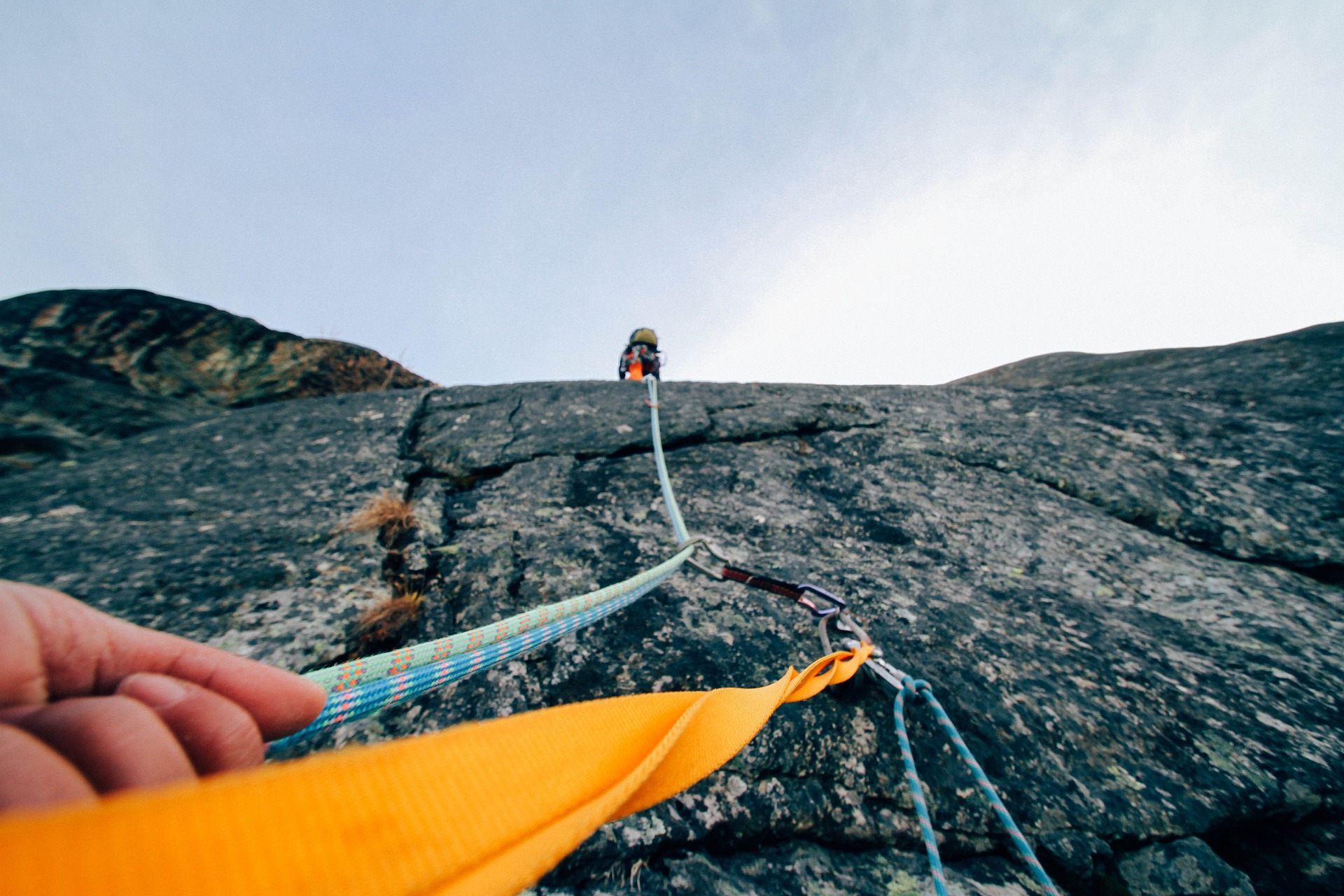What climbing is: a rough guide

Climbing could be described as “moving across terrain that is vertical”, such as steep mountains, ridges, rock faces, and ice faces.
This is usually done as a sport and for the pure enjoyment of being outdoors and close to nature, and for the scenery. It also provides an opportunity to use our body for more than sitting at a desk.

When climbing, all the muscles in your body are used, especially your arms and legs. We learn to move in new ways and balance is learned, both in terms of the required movements for rock climbing and balance in your life in general, where you can get out and away from the every-day grind.
With climbing, intense concentration is needed, so there needs to be complete unity of mind and body.
The pursuit of climbing can be life changing

You may find your inaugural climb is a life changing experience and you can learn so much about yourself while facing the challenges of the climb. You will find depths within yourself that you never knew were there. You will be challenged to be courageous and resourceful.
The very act of climbing alters your perception about yourself. You will find new confidence and strength, physically and mentally, in body and character. The experience will help overcome fear and self-doubt. You will discover abilities you did not know you had.
Some tangible benefits

Climbing also brings you closer to nature, promoting a deeper relationship with nature and allowing you to enjoy it more fully. You get a birds eye views from the top of the surrounding countryside. Your mental and physical fitness will improve, and if you ever had a fear of heights or of falling, you will get over these quickly.

The sport is, however, risky and it does at times require a steely nerve and lots of skill.
The equipment, such as harnesses, ropes, helmets, pitons, carabiners, and other tools, when correctly used, will reduce such risks greatly. You can stay safe while defying gravity and enjoying yourself.

You will be required to use your hands and feet in order to move upwards and overcome whatever obstacle confronts you, whether it is an artificial wall or a small cliff or even a large high vertical face with overhangs.
A short overview of types of climbing
Indoor climbing

Usually your first call for training and for practice.
Bouldering

Here you climb blocks of rock or small boulders commonly without ropes but often over crashpads, as the activity is generally carried out closer to the ground.
Sports climbing

This is performed on routes where bolts have been permanently installed in the rock. Elite climbers and recreational climbers can use these routes which come in a wide range of difficulty.
Trad or traditional climbing

This is the original type of climbing done by mountaineers, generally from the base of a given cliff face to the summit while using removable climbing equipment such as nuts and cams.
Ice climbing

This is a popular winter sport where the climber climbs up steep slopes covered in ice. These are often frozen waterfalls. They use purpose built gear such as ice axes and crampons.
Mountaineering

Mountain climbing can be anything from just a steep hike to serious climbing up mountain summits. These can be defined as hills, or they can be some of the world’s highest mountains. This pursuit can include the other types of climbing such as ice climbing, rock climbing, and bouldering. It may call on many skills, and good judgment is required for all these types of climbing.

Anything that gets you to the top!
If you have any comments then please drop us a message on our Outdoor Revival Facebook page
If you have a good story to tell or blog let us know about it on our FB page, we’re also happy for article or review submissions, we’d love to hear from you.
We live in a beautiful world, get out there and enjoy it.
Outdoor Revival – Reconnecting us all with the Outdoors
